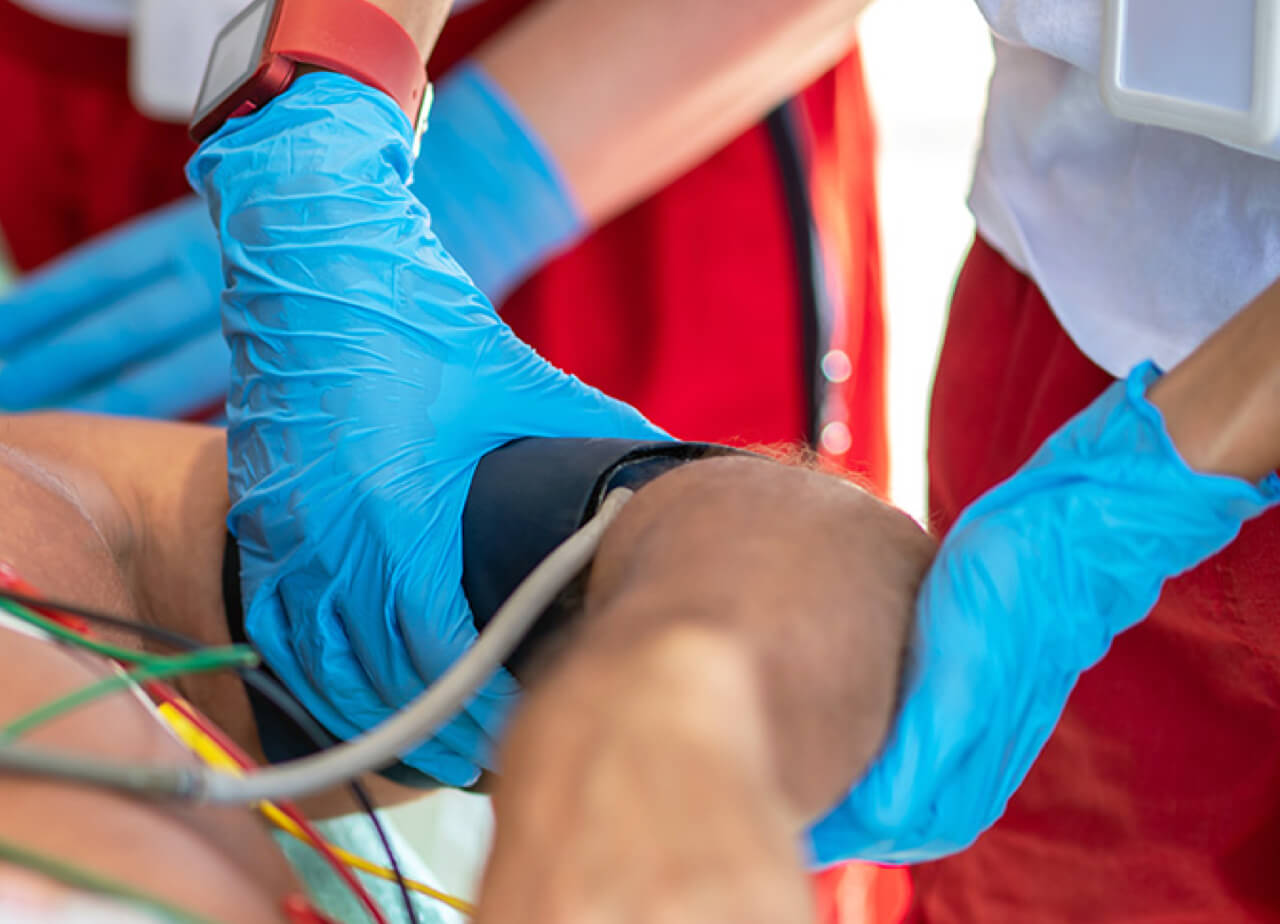Emergency medical professionals can often mean the difference between life and death. The range of situations they deal with is varied and challenging. One of the main goals of emergency medical staff is to stabilize a patient and transport them safely to a facility where they’ll receive more comprehensive care.
While there are several emergency medical services certifications to earn, this article will focus on the Advanced Emergency Medical Technician
(AEMT), governed by the National Registry of Emergency Medicine (NREMT).

What is an AEMT?
AEMTs provide basic to limited advanced emergency care to patients who are in the emergency medical system. AEMTs work as part of a larger EMS team with supervision from other medical staff. AEMT is generally considered the third highest certification above Emergency Medical Responders (EMRs) and Emergency Medical Technicians (EMTs).
How to get certified as an AEMT
EMS certifications have some prerequisites and typically require a state-approved program, training hours completed, and passing of one or several types of exams.
Here are the requirements to get certified as an AEMT:
- Hold a state-licensed EMT certification
- Complete a state-approved AEMT course
- Current CPR-BLS for “Healthcare Provider” or equivalent credential
- Pass the cognitive AEMT exam
- Pass the psychomotor AEMT exam
What’s on the exam?
According to the AEMT Certification Test Plan published in 2024, there are six sections on the cognitive exam:
- Airway, Respiration & Ventilation 9% – 13%
- Cardiology & Resuscitation 11% – 15%
- Trauma 7% – 11%
- Medical/Obstetrics/Gynecology 25% – 29%
- EMS Operations 6% – 10%
- Clinical Judgment 31% – 35%
Items related to pediatric patient care will be integrated throughout the examination content. The cognitive exam has 135 items, and test takers have three hours to complete the exam.
There are six sections to the psychomotor exam:
- Patient Assessment – Trauma
- Dynamic Cardiology
- Static Cardiology
- Oral Station Case A
- Oral Station Case B
- Integrated Out-Of-Hospital (IOOH) Scenario
AEMTs must get recertified every two years. The Candidate Handbook for the NREMT® AEMT can be found here.
What can AEMTs do that EMTs cannot?
AEMTs are certified to perform more advanced life-saving procedures and use advanced emergency equipment. Here are examples of what an AEMT can do that an EMT cannot:
- Insert and administer IV medications
- Administer a wider range of medications like nitroglycerine and epinephrine
- Administer advanced airway measures like the placement of supraglottic airways
- Interpret electrocardiograms (ECGs)
Is getting Advanced EMT certified worth it?
It depends on your personal goals. If you want to be a highly skilled emergency medical professional, earning the AEMT certification is well worth the effort, and it will put you on the path to becoming a paramedic.

